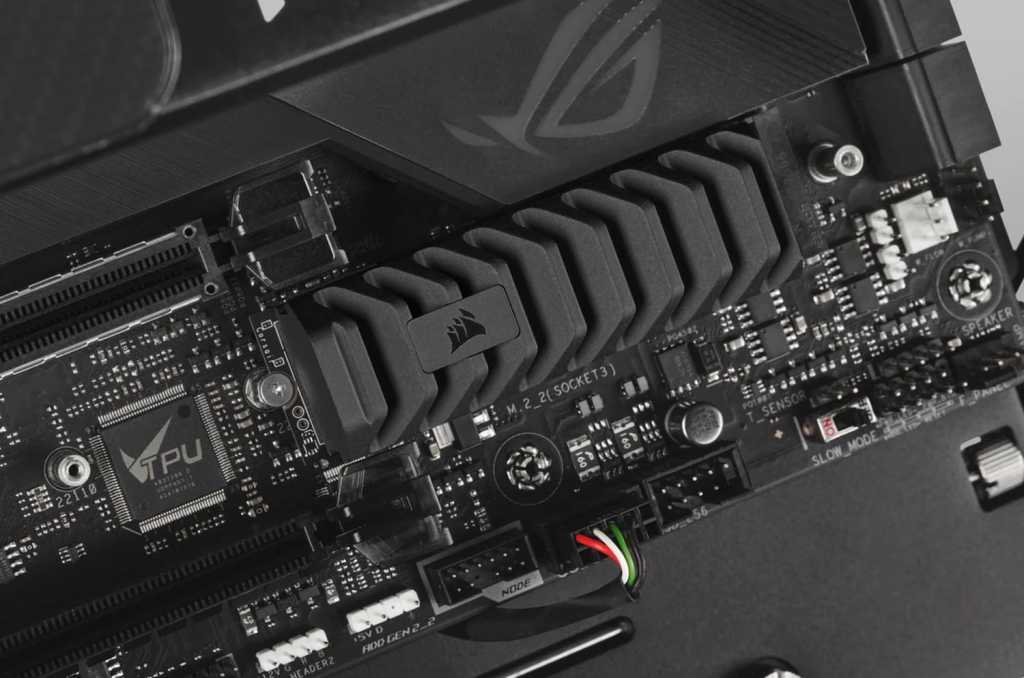While older computers and storage drives might still use the common SATA or the older PCIe 3.0 interfaces to sling your bits of data around, more recent computing equipment typically supports the far faster PCIe 4.0 protocol. If you’re really lucky (or spent a lot of money), you might even have faster PCIe 5.0. But that’s a subject for another roundup.
We’ve tested nearly three dozen PCIe 4.0 SSDs and our list includes the best of the bunch for various needs. Whether you want to upgrade, or add more storage to your PCIe 4.0 computer, there’s an SSD for you. Read on to learn more, including what to look for in PCIe 4.0 SSD.
WD Black SN7100 SSD – Best PCIe 4.0 SSD
Pros
- Top-notch HMB performance
- Affordable
- Sexy name
Cons
- Slower random performance than DRAM designs
Price When Reviewed:
500GB: $60 I 1TB: $90 I 2TB: $140
There can be a trade-off with HMB (host memory buffer) design SSDs, such as the SN7100. They are distinct for using the host system’s memory for primary caching duties, as opposed to packing their own DRAM. But while there may be some specific scenarios where DRAM drives excel over HMBs — such as in the writing of very large amounts of data — in the vast majority of applications, the two designs are very competitive and almost indistinguishable.
Among all HMB SSDs we’ve tested, we were flat-out wowed by the SN7100’s performance. The 2TB version that we looked at was the fastest such SSD that we’ve run through our gauntlet of benchmarks. And when it comes to price, compared to DRAM designs, it’s really no contest. Indeed, the SN7100 is close to $50 less than our previous pick, the Solidigm P44 Pro, for both the 1TB and 2TB capacities.
Combine that with an industry standard five-year warranty / 600TBW rating (terabytes that can be written) per TB, and you’re looking at probably the best PCIe 4.0 SSD for average users as well as gamers.
Read our full
WD Black SN7100 NVMe SSD review
WD SN5000 NVMe SSD – Best budget PCIe 4.0 SSD
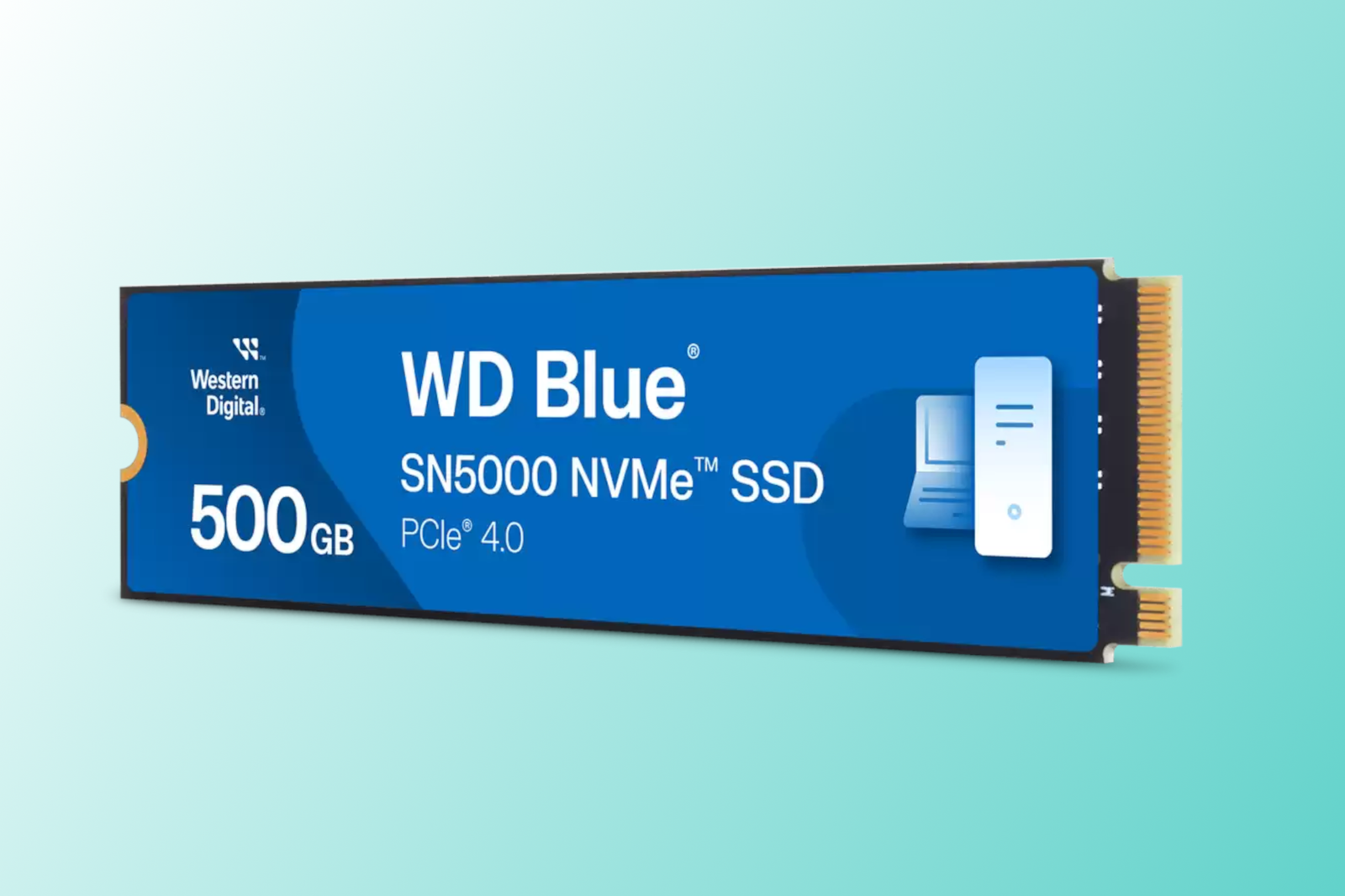
Pros
- Good everyday performance
- Very affordable
- Fastest NVMe SSD of any ilk we’ve tested writing 450GB
Cons
- Top performance requires HMB support
Price When Reviewed:
500GB: $80 I 1TB: $90 I 2TB: $150 I 4TB: $290
Best Prices Today:
With PCIe 5.0 drives finally arriving, we’re finally starting to see companies offer budget PCIe 4.0 NVMe drives at compelling prices. Our previous pick, the WD Blue SN580 NVMe SSD, has just been supplanted by WD’s Blue SN5000. At just $75 for a 1TB model (at the time of writing), and with speedy transfers, you likely won’t find a better value in a PCIe 4.0 drive.
In our testing, this drive proved among the fastest Host Memory Buffer (HMB/DRAM-less) SSDs we’ve tested. And unlike the SN580 before it, the SN5000 didn’t falter during the 450GB transfer test — instead tying the record among all PCIe SSDs.
Read our full
WD Blue SN5000 NVMe SSD review
Crucial P310 (2230) – Best PCIe 4.0 SSD for Steam Deck
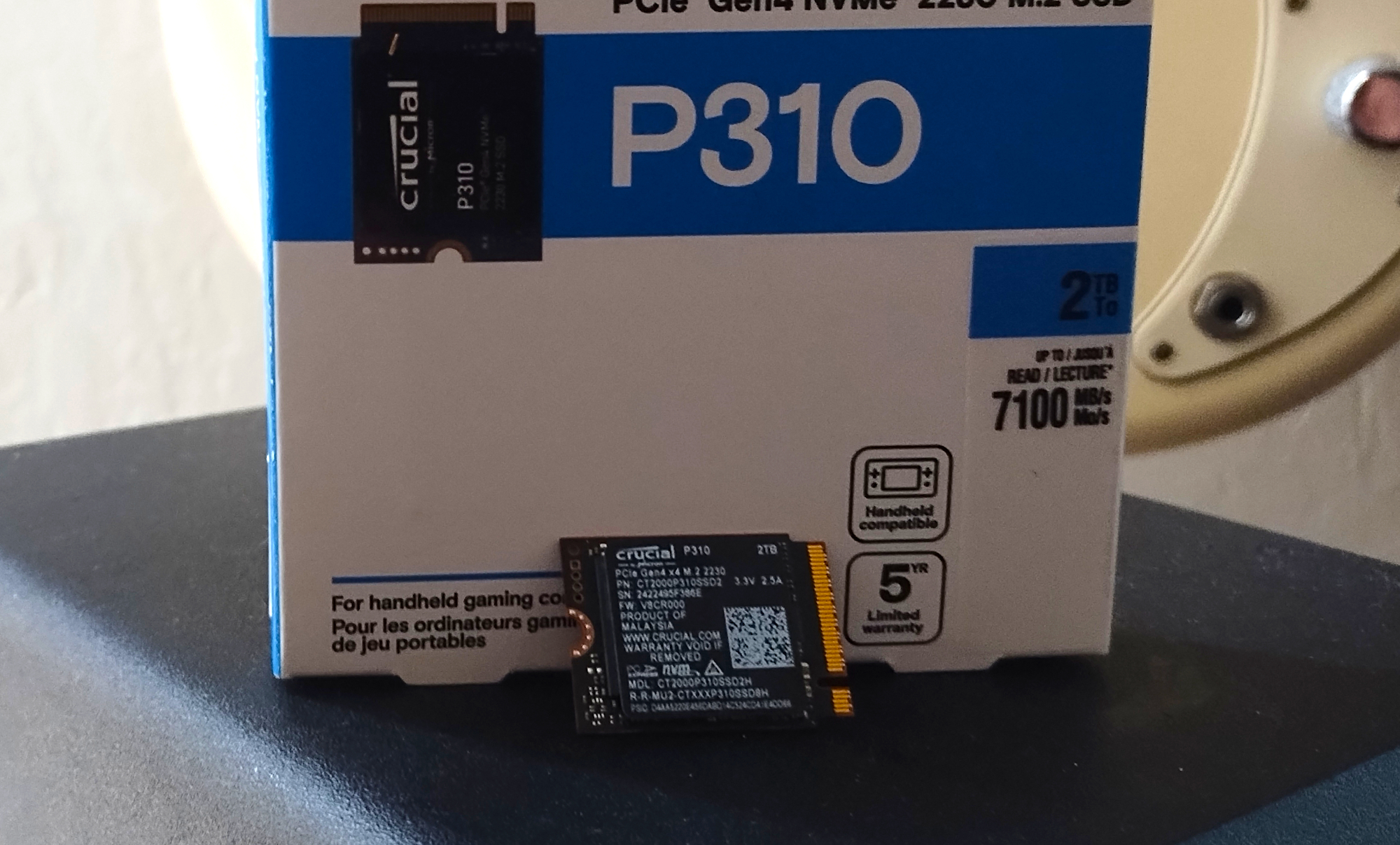
Pros
- Fastest 2230 SSD we’ve tested
- Available with up to 2TB of capacity
Price When Reviewed:
1TB: $115 I 2TB: $215
Best Prices Today:
If you need a small form-factor, 2230 (22 mm wide, 30 mm long) NVMe SSD for your Steam Deck or other device, look no further than the Crucial P310. It’s the fastest 2230 SSD we’ve tested, and by a rather large margin.
The P310 bested our previous favorite 2230 drive — the WD Black SN770M — in every benchmark save for the 450GB transfer, where it lost steam (pun intended) at the 85 percent mark after running out of secondary cache. But transfers this large are rare for most users, and unheard of in a Steam Deck.
The P310 is a bit pricier than the SN770M, but only by a tad more than $10 in both the 1TB and 2TB offerings.
If optimum speed is what you’re after, and you don’t foresee regularly moving large amounts of data, the P310 is the 2230 ticket.
Read our full
Crucial P310 NVMe SSD (2230) review
Seagate Game Drive – Best PCIe 4.0 SSD for PS5
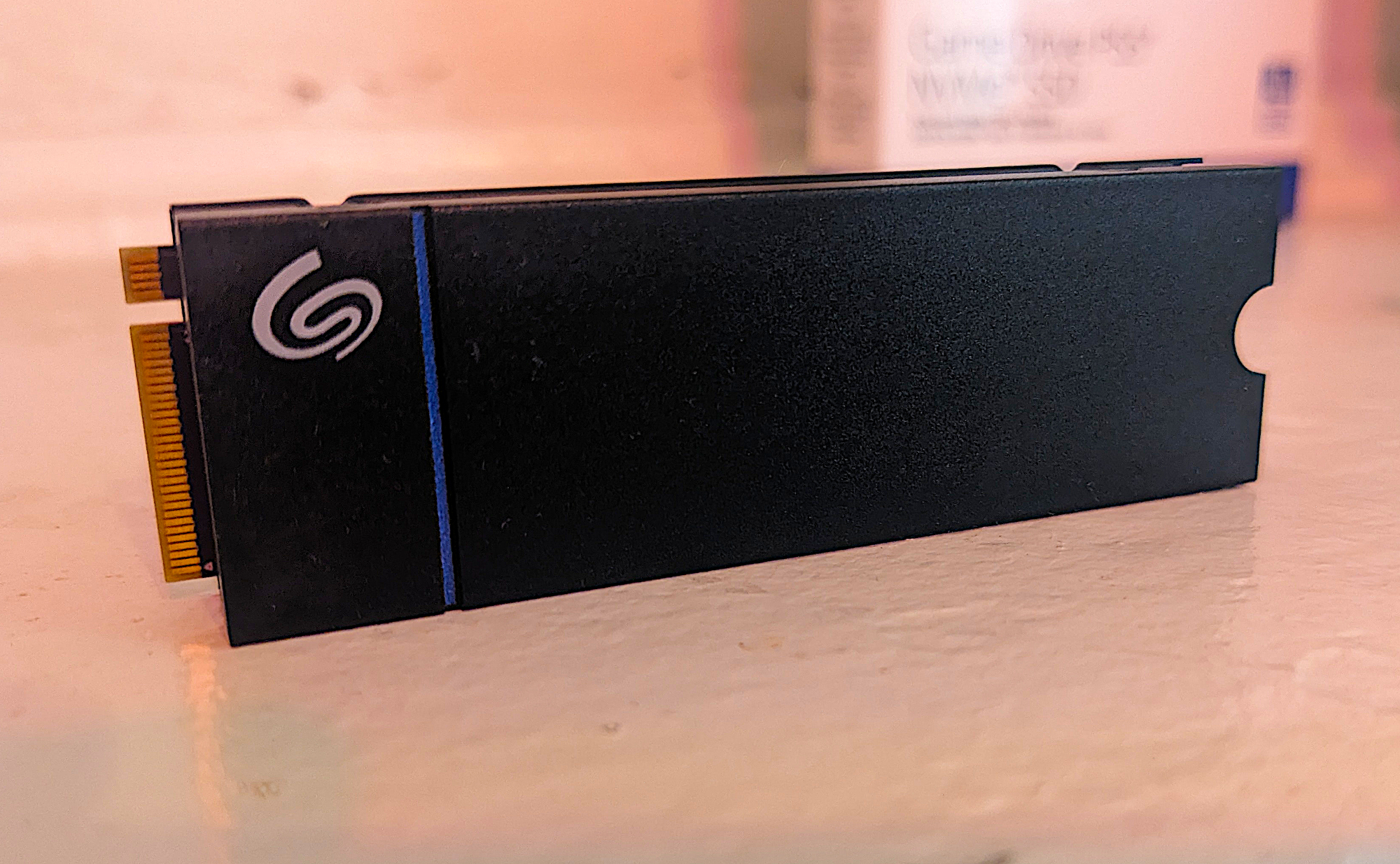
Pros
- Very good overall performance
- Excellent 4K performance
- Low-profile heatsink
- Twice the TBW rating of the competition
Cons
- A bit pricey
- No 4TB model
Price When Reviewed:
1TB: $100 I 2TB: $150
Best Prices Today:
The Seagate Game Drive is a PCIe 4.0 NVMe SSD aimed specifically at next-gen game consoles — the PS5 in particular. It doesn’t disappoint, with DRAM for primary caching duties, which is almost essential to wring top performance out of Sony’s console system. The PS5 doesn’t support HMB, so without DRAM you’re relying solely on an SSD’s slower secondary caching. The Game Drive ships in 1TB and 2TB capacities, so you’ll have plenty of space to store all of your games.
While the Seagate Game Drive is optimized for a PS5, it’s perfectly viable for any computer. It did remarkably well in our performance testing, earning the spot as the second-fastest PCIe 4.0 SSD to date with random ops. Seagate provides a generous five-year warranty with the drive and it has an astounding 1,275TBW rating—more than double the industry norm. PS5 owners simply can’t go wrong with the Seagate Game Drive.
Read our full
Seagate Game Drive PS5 NVMe SSD review
Corsair MP600 Micro 2242 SSD – Best 2242 form-factor SSD
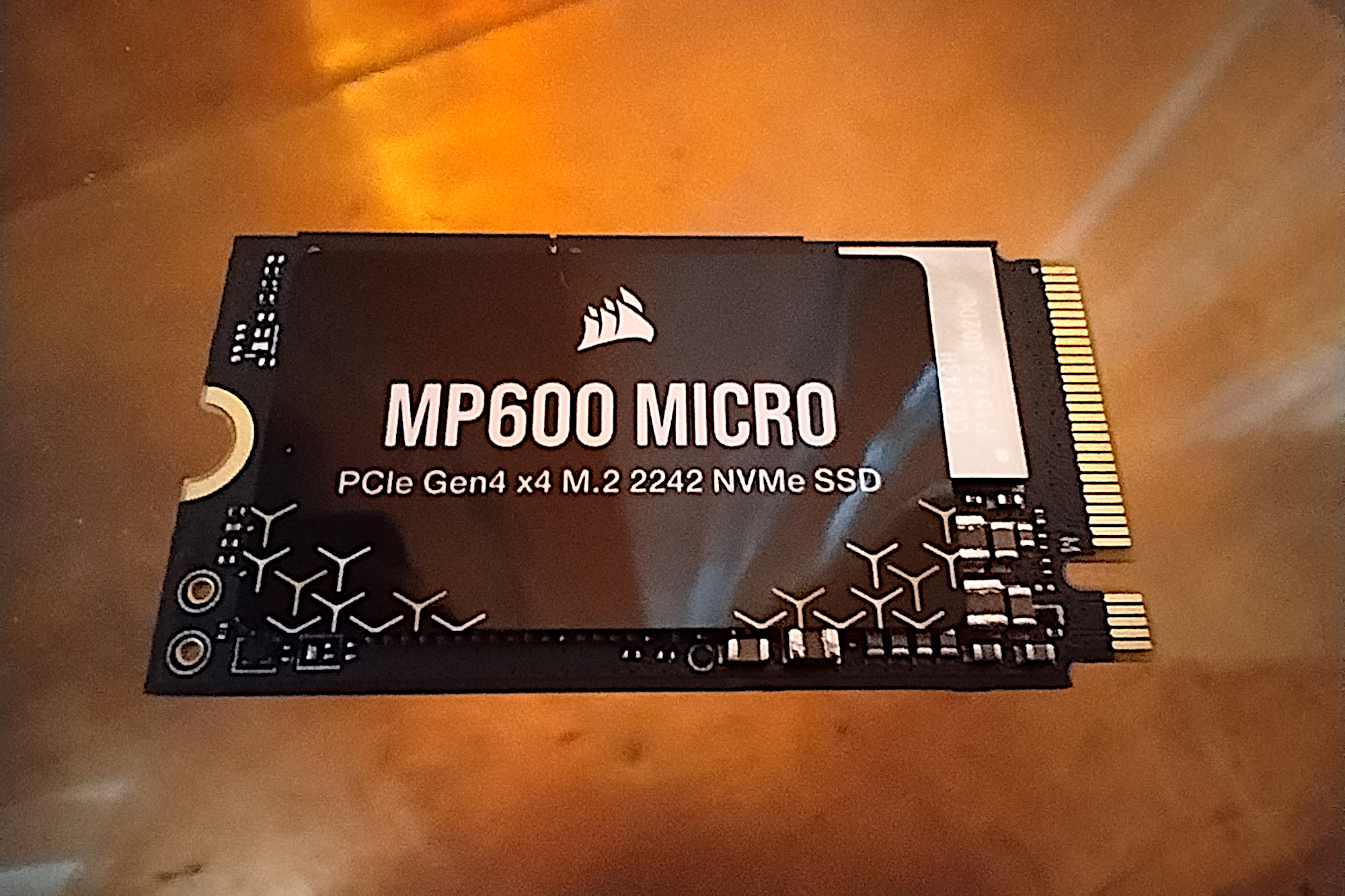
Pros
- Direct fit for Lenovo 2242 M.2 slots
- Good performance
- Priced affordably
Price When Reviewed:
1TB: $99.99
The Corsair MP600 Micro fills the niche of devices that can accommodate an SSD that’s larger than the 2230 form factor used by game consoles, but can’t accept a standard 2280 modules that are used in most PCs and laptops. We’re talking about the 2242 form factor — meaning 22mm wide by 42mm long.
Lenovo set off the 2242 trend with its Legion Go and Thinkpad portables and there are now some respectable options for storage upgrades — the best of which is the Corsair MP600 Micro.
The MP600 Micro isn’t the fastest PCIe 4.0 drive we’ve tested, but for its class of truncated drives, it churned out a very competitive test performance. Currently, you’ll only find the MP600 Micro in 1TB capacity. For shoppers who want more space, see the Crucial P310 above, which is a 2230 drive in up to 2TB — though it will require an adapter.
Read our full
Corsair MP600 Micro 2242 SSD review
Other notable PCIe 4.0 SSD reviews
The Teamgroup MP44Q is a great everyday performer and a super bargain for the average user; the Addlink A93/S93 is a solid-performing PCIe 4.0, DRAM-less NVMe SSD that can save you a few bucks. But the A93 with its heatsink faces heavy competition from many similarly priced and often faster SSDs; the WD SN850X 8TB SSD is far faster than the previously tested 2TB version, but you pay a slight premium for it; the 990 EVO Plus is an update to Samsung’s 990 EVO hybrid drive that can use either the PCIe 4.0 or PCIe 5.0 interface — although the latter is limited to PCIe 4.0’s theoretical bandwidth; if you’re looking to stretch your SSD dollar, the T-Force G50 should be on your short list. It’s an inexpensive, solid performing PCIe 4.0 drive for everyday tasks; the Kingston NV3 is proof that DRAM-less drives — those use a Host Memory Buffer (HMB) as cache — can offer competitive performance, while also saving you some money; the Sabrent Rocket Nano 2242 features a smaller form factor (22mm x 42mm) that was tailor-made for Lenovo’s Legion Go and Thinkpads — but it can also be used in a standard slot as well.
How PCWorld tests PCIe 4.0 SSDs
Drive tests currently utilize Windows 11, 64-bit running on an X790 (PCIe 4.0/5.0) motherboard/i5-12400 CPU combo with two Kingston Fury 32GB DDR5 4800MHz modules (64GB of memory total). Both 20Gbps USB and Thunderbolt 4 are integrated to the back panel and Intel CPU/GPU graphics are used. The 48GB transfer tests utilize an ImDisk RAM disk taking up 58GB of the 64GB of total memory. The 450GB file is transferred from a 2TB Samsung 990 Pro which also runs the OS.
Each test is performed on a newly formatted and TRIM’d drive so the results are optimal. Note that in normal use, as a drive fills up, performance may decrease due to less NAND for secondary caching, as well as other factors. This can be less of a factor with the current crop of SSDs with far faster late-generation NAND.
Caveat: The performance numbers shown apply only to the drive we were shipped and to the capacity tested. SSD performance can and will vary by capacity due to more or fewer chips to shotgun reads/writes across and the amount of NAND available for secondary caching. Vendors also occasionally swap components. If you ever notice a large discrepancy between the performance you experience and that which we report, by all means, let us know.
To learn more about our testing methodology see PCWorld’s article on how we test internal SSDs.
Why you should trust PCWorld for PCIe 4.0 SSD reviews and buying advice
We’re not called PCWorld for nothing. Our reviewers have been testing PC hardware for decades. Our storage evaluations are exhaustive, testing the limits of every product — from performance benchmarks to the practicalities of regular use. As PC users ourselves, we know what makes a killer product stand out. Only the best SSDs have made our list of picks.
Who curated this article
Jon Jacobi was around when computing meant flipping switches, and has witnessed storage morph from punch cards and tape to solid state drives. He’s been using and testing HDDs, SATA SSDs, and NVMe SSDs for PCWorld for more than two decades. To paraphrase a well-known commercial, you might say he’s seen a thing or two.
How to choose the best PCIe 4.0 SSD
There are a few things to look out for, but most importantly you’ll want to focus on capacity, price, and warranty length. Three-year warranties are standard with bargain drives, but nicer models are generally guaranteed for up to five years. And unlike the early days of SSDs and NAND, modern drives won’t wear out with normal consumer usage, as Tech Report tested and proved years ago with a grueling endurance test.
Another crucial thing to watch out for is the technology used to connect the SSD to your PC. For more details and buying advice you can read our in-depth guide on which type of SSD you should buy.
A few handy definitions
SATA: This older, slower technology is both a connection type and a transfer protocol, used to connect most 2.5-inch and 3.5-inch hard drives and SSDs to your PC. SATA III speeds can hit roughly 600MBps, and most—but not all—modern drives max it out. (More on that in the next section.)
PCIe: This interface taps into four of your computer’s PCIe lanes and blows away SATA speed, to the tune of nearly 4GBps over PCIe gen 3 and well over 10GBps when you reach PCIe 5.0. The transport technology pairs nicely with the NVMe protocol (see the next entry) used by all modern M.2 PCIe SSDs. Both the PCIe slots in your motherboard and the M.2 slot in your motherboard are generally wired to support the PCIe interface, and you can buy adapters that allow you to employ “gumstick” (2280) M.2 drives in a PCIe slot. PCIe 4.0 drives are significantly faster, but require an AMD Ryzen 3000-series or Intel Core 11th-gen (or newer) processor, along with a compatible PCIe 4.0 motherboard.
NVMe: Non-Volatile Memory Express technology takes advantage of PCIe’s bountiful bandwidth and the unique properties of NAND to create blisteringly fast SSD performance. Check out PCWorld’s “Everything you need to know about NVMe” for a nitty-gritty deep-dive.
M.2: You might assume M.2 drives are PCIe/NVMe. You might not know, however, that before NVMe was a thing, some M.2 slots and SSDs were SATA. If you’re shopping to upgrade an older computer make sure which technology you need — NVMe or SATA.
mSATA and U.2: You may also stumble across mSATA in older equipment, and U.2 SSDs for enterprise-grade servers and the like, but consumer motherboard support is almost nil for the latter.
Speed matters, of course, but most modern SSDs, even the slower ones are ridiculously fast. Also, don’t overbuy. A PCIe SSD will only perform as fast as the generation of the device it’s installed in. In other words, don’t expect a PCIe 5.0 SSD to perform at its rated speed on a PCIe 3.0 computer.
Speaking of which, you can expect roughly 3.5GBps max from PCIe 3.0, 7.5GBps max from PCIe 4.0, and somewhere just north of 12GBps with PCIe 5.0 under optimal conditions — i.e., using benchmarks or software that supports NVMe’s multiple queues. Single-queue Windows limits all flavors to under 4GBps during normal transfers. Again, don’t overbuy in terms of performance.
